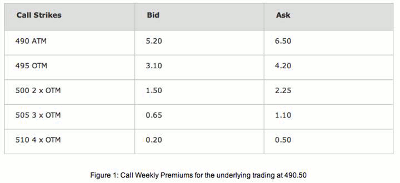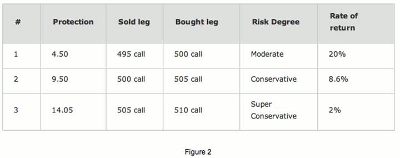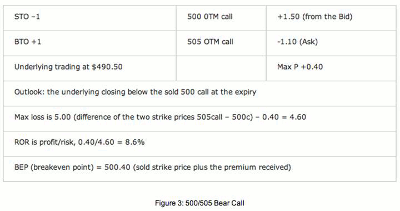Using Average True Range (ATR), option traders constructing spread trades can make more educated choices when selecting which leg to sell versus which leg to buy, explains Josip Causic of Online Trading Academy.
This option lesson is solely aimed at one and one purpose only: how to select a short vertical option spread based on the current reading of the Average True Range (ATR). Although there are other ways to select which leg to sell versus which leg to buy, we are going to focus on the ATR as our determining factor in our selection of short verticals.
The goal is to increase the probability of having a winning trade by placing the sold strike price outside of the normal reach of the trading range so our odds of winning increase.
Hence, let us start with the Investopedia definition of the ATR: A measure of volatility introduced by Welles Wilder. Wilder originally developed the ATR for commodities, but the indicator can also be used for stocks and indexes. Simply put, a stock experiencing a high level of volatility will have a higher ATR, and a low volatility stock will have a lower ATR.
Also, it could be added that the default setting of the ATR is an average of the last 14 sessions of the price actions’ true ranges. If we are looking at a particular underlying, let’s say XYZ stock, that is trading at $490 and has an ATR of 8.97, then for our intraday trade, we should perhaps be considering selling either a (490 – 8.97) 480 put or a (490 + 8.97) 500 call.
However, the question becomes how long are we aiming to be in such a trade? This is more logical if we are selling the weekly credit spreads on Friday, the day after they were just listed.
In such case, the daily ATR is not what our focus should be because within any of the next five trading sessions, the sold leg could be threatened. Hence, let us assume that we are looking at the weekly position and we are using the weekly ATR of $14.34 on this particular underlying that is trading at $490.
Figure 1 below lists the cost of call premiums. For simplicity’s sake, we will focus only on the bear call side.
At the top is the 490 strike price that currently has only 50 cents of intrinsic value while the asking price for the 490 call is $6.50, which means that six points are the time, or extrinsic value. The buyer of the 490 call must overcome six points of obstacle, while in our case of a bear call, we want to sell the rich premium. We will discuss four possible bear calls, the first one being the most aggressive one.
This would involve selling the 490 call and protecting by purchasing a higher-strike-price call. We should consider this spread as an aggressive trade because the underlying would need to drop or stay where it is at $490.50 in order for us to be profitable. There is a high chance that the 490-pound gorilla (product) would not remain still in the current volatile environment, so let us avoid this one.
The following table lists more acceptable choices:
Reading from left to right, we have the protection column. This is how far the stock would have to move to get to our short strike. Keep in mind that the weekly ATR is nearly nine points. The second and third columns list the legs, the fourth names the degree of risk, and the last one points out that the rate of return (ROR) decreases as we move away from the current price of $490.50.
Knowing that the ROR is too small on the 505/510 call spread, and also knowing that the risk is too high on the 495/500 spread, due to the weekly ATR value, we are left with only one rational choice. The conservative 500/505 bear call, which is outside of the weekly ATR reach, has its inner workings listed in the figure below. So, out of many choices, our process of elimination led us to this one.
Read the rest of this article at Online Trading Academy
By Josip Causic, instructor, Online Trading Academy
























